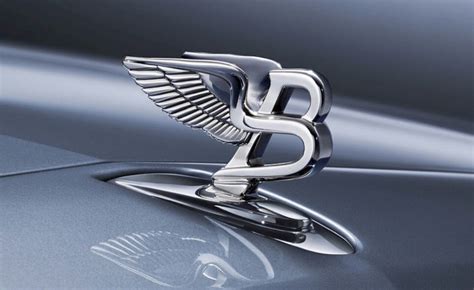Explore Honda’s founding, innovations, global expansion, technological impact, and design evolution in the automobile industry. Learn about Honda’s journey to success.
Founding of Honda
Contents
The history of Honda Car Company dates back to 1948, when Soichiro Honda founded the company with a vision to build and sell motorized bicycles. His passion for innovation and engineering led to the development of the first complete motorcycle in 1949, known as the Dream.
Honda’s founding was driven by the desire to create affordable and efficient transportation for the masses. The company’s early success and reputation for quality engineering laid the foundation for its future expansion into the automobile industry. Honda’s commitment to innovation and technological advancement is evident in its early history, as the company quickly gained recognition for its forward-thinking approach to vehicle design and manufacturing.
As a pioneer in the automotive industry, Honda’s founding marked the beginning of a new era in transportation. By introducing innovative technologies and high-quality products, the company became a leading force in the global automotive market.
The founding of Honda has had a lasting impact on the automotive industry, inspiring other companies to prioritize innovation and quality. Honda’s commitment to pushing the boundaries of what was thought possible in the automotive industry continues to be a driving force behind its success.
Early innovations in automobile industry
The early innovations in the automobile industry were crucial in shaping the modern automotive landscape. One of the most significant milestones in this period was the invention of the internal combustion engine by Nikolaus Otto in 1876, which laid the groundwork for the development of gasoline-powered automobiles. This breakthrough revolutionized the transportation sector and paved the way for the mass production of automobiles.
Another key advancement during this era was the introduction of assembly line production by Ransom Olds in 1901, which drastically reduced manufacturing costs and made automobiles more affordable to the general public. This innovation not only transformed the industry but also set the stage for the production methods that are still used today.
In addition to these groundbreaking developments, the early 20th century also saw the rise of electric and hybrid vehicles, with companies like Porsche and Lohner-Porsche pioneering the integration of electric motors in their automobiles. These innovations laid the foundation for the future electrification of the automotive industry, which has become increasingly prevalent in recent years.
The early innovations in the automobile industry also encompassed advancements in safety features, with companies like Mercedes-Benz and Volvo introducing seat belts and other safety technologies to improve the protection of vehicle occupants. These pioneering efforts set the standard for modern vehicle safety and have undoubtedly saved countless lives over the years.
In conclusion, the early innovations in the automobile industry were instrumental in driving the evolution of automobiles and shaping the industry as we know it today. From the introduction of the internal combustion engine to the implementation of assembly line production and advancements in electric and hybrid vehicles, these innovations have left an indelible mark on the automotive landscape and continue to influence the development of vehicles around the world.
Honda’s expansion into global markets
Honda’s has a long history of successful expansion into global markets. It all began in the 1960s when the company first started exporting its motorcycles to the United States, and later expanded its operations to other countries in Europe and Asia.
By the 1970s, Honda had established itself as a major player in the global automotive industry, with the introduction of its popular Civic and Accord models. This success laid the groundwork for the company’s further expansion into new international markets.
Through strategic partnerships and investments, Honda was able to establish production facilities in countries such as the United States, Canada, and the United Kingdom, allowing the company to manufacture its vehicles closer to the markets in which they were sold.
This proximity to customers and the ability to customize products to local preferences and regulations helped Honda to gain a competitive edge in global markets, allowing the company to further expand its reach and increase its market share.
Today, Honda continues to be a global leader in the automotive industry, with a strong presence in markets all over the world, showcasing its commitment to innovation and excellence on a global scale.
Impact of Honda’s technological advancements
In the competitive world of automotive industry, Honda has made a significant impact with its technological advancements. From pioneering the development of fuel-efficient engines to introducing cutting-edge safety features, Honda has been at the forefront of innovation in the automobile industry.
One of the key technological advancements that has had a major impact is the development of the VTEC (Variable Valve Timing and Lift Electronic Control) engine. This revolutionary engine technology, which was first introduced in the 1989 Honda NSX, provided a significant boost in engine performance and fuel efficiency. The innovative design of the VTEC engine allowed for variable valve timing and lift, resulting in improved power delivery and reduced fuel consumption.
In addition to engine technology, Honda has also been a trailblazer in implementing advanced safety features in its vehicles. The introduction of the ACE™ Body Structure in Honda vehicles has significantly enhanced occupant protection in the event of a collision. This innovative safety structure is designed to distribute crash energy more evenly throughout the front of the vehicle, reducing the likelihood of severe cabin deformation and injury to the occupants.
Another area where Honda has made a substantial impact with its technological advancements is in the development of hybrid and electric vehicles. The introduction of the Honda Insight in 1999 marked the company’s entry into the hybrid vehicle market. Since then, Honda has continued to innovate in the area of alternative fuel vehicles, with the introduction of the Clarity series of fuel cell and electric vehicles. These advancements have positioned Honda as a leader in sustainable mobility solutions.
Furthermore, Honda has also been a pioneer in the development of autonomous driving technologies. The company’s commitment to advancing mobility is evident in its development of advanced driver-assist systems, such as the Honda Sensing™ suite of safety and driver-assistive technologies. These innovations have not only improved the safety and convenience of driving, but also paved the way for the future of autonomous vehicles.
Evolution of Honda’s design and branding
Honda has come a long way since its early days in the 1940s, and its journey in the automobile industry has been marked by constant evolution and innovation. One of the most significant aspects of this evolution has been the changes in design and branding that the company has undergone over the years.
From its early models such as the Honda 360 to the modern and sleek Civic and Accord, Honda’s design philosophy has evolved to reflect the changing tastes and preferences of consumers. The company’s commitment to innovation and efficiency is evident in its carefully crafted aesthetic choices, which have helped establish Honda as a leader in the global automotive market.
Not only has Honda’s design changed over time, but its branding strategy has also evolved to keep pace with the demands of a rapidly changing and competitive industry. The company’s marketing efforts have played a crucial role in shaping consumer perceptions and establishing Honda as a reliable and trustworthy brand.
Through a combination of bold advertising campaigns, strategic sponsorships, and a focus on environmental sustainability, Honda has successfully positioned itself as a brand that not only delivers high-quality products but also cares about the well-being of its customers and the planet. This holistic approach to branding has been a key factor in Honda’s enduring success and popularity.
In conclusion, the evolution of Honda’s design and branding reflects the company’s commitment to adaptability and innovation. As a brand that has stood the test of time, Honda continues to set new benchmarks in the automotive industry by staying true to its core values while also embracing change and progress.














